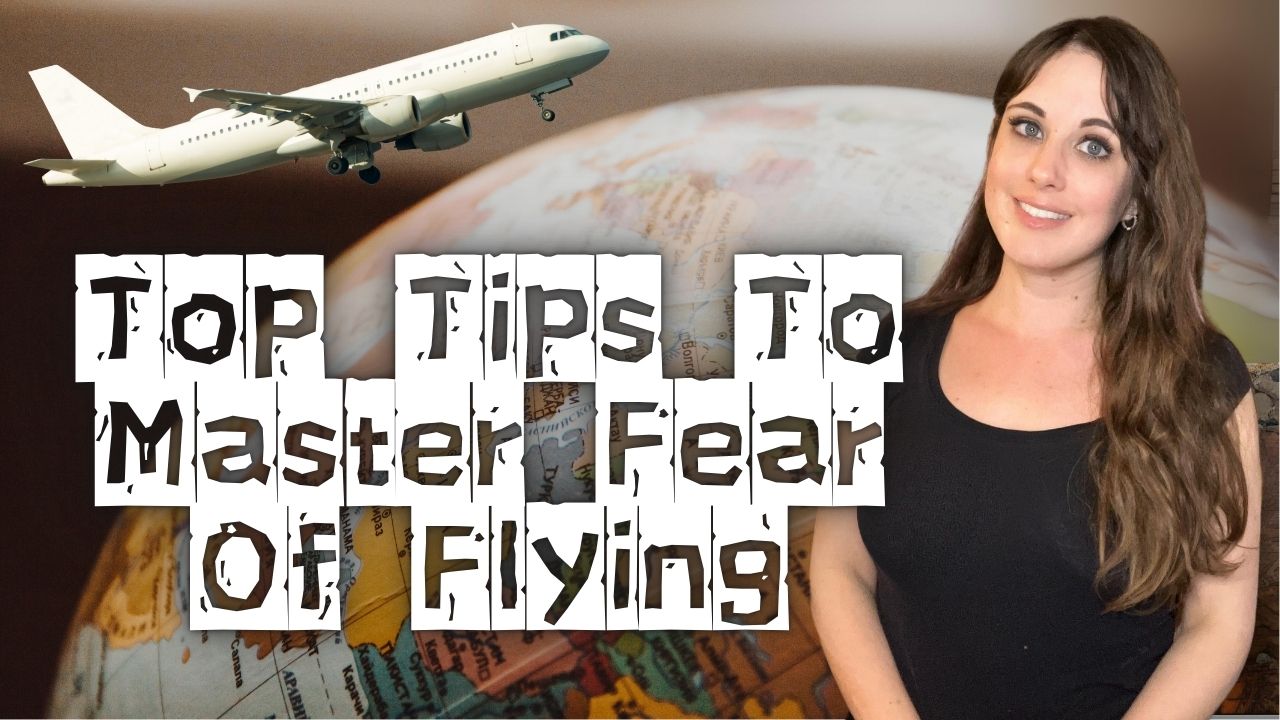
As an Amazon Associate I earn from qualifying purchases.
On the JJ Barnes Blog, with a summer of travel opportunities ahead for many, I check out top tips to master fear of flying so your holidays can be a better and more relaxing experience.

The sun is out and, if like you’re like me, the allure of jetting off to exotic locales is irresistible, and there are thoughts of sandy beaches and fabulous foods dancing in your mind. But for those gripped by the insidious clutches of flight anxiety, the idea of soaring through the skies can be a terrifying prospect. The mere thought of boarding a plane can transform a potential holiday into a daunting ordeal.
To try and help make international adventures accessible, I wanted to check out top tips to master a fear of flying and help you enjoy a stress-free journey. With the help of CBD experts at Brown’s CBD, I have compiled some incredible tips to help tackle flight anxiety. From relaxation techniques to strategic seating choices, this expert advice is perfect for those who struggle with their mental health whilst travelling.
Top Tips To Master Fear Of Flying
Master the 5-4-3-2-1 technique
A powerful tool for taming anxiety, the 5-4-3-2-1 grounding technique can be a lifesaver during those turbulent flight moments. By anchoring your mind to the present, this simple yet effective method can help to quell the rising tide of fear. By engaging your senses, you can gradually shift your focus away from anxious thoughts and towards the tangible world around you.
5. Look for five things you can see. Note details, such as the pattern on the seat in front of you or the colour of the cabin.
4. Find four things you can touch. Feel the texture of your seat, the in-flight magazine, or even your clothing.
3. Listen for three different sounds. This could be the hum of the engine, the chatter of passengers, or the announcements over the intercom.
2. Identify two things you can smell. Although this can sometimes be more challenging on a plane, you might notice the scent of food or your hand lotion.
1. Focus on one thing you can taste. This could be the food you’re eating, or the lasting taste of chewing gum or mints.
By immersing yourself in the present moment through your senses, the 5-4-3-2-1 technique can be a powerful antidote to anxiety. This mindfulness-based approach interrupts the racing thoughts that often fuel anxiety, providing a much-needed respite from overwhelming worries. As you shift your focus to the tangible world around you, your body begins to relax, and your mind finds a sense of calm amidst the storm.
Choose a seat over the wings
The strategic placement of your seat can significantly influence your overall flight experience, especially if turbulence tends to unsettle you. Opting for a seat positioned over the wings can offer a noticeable difference in comfort. As the aircraft’s center of gravity, this area generally experiences less pronounced movement during turbulence. The sensation of a smoother ride can be a game-changer for those prone to flight anxiety, providing a much-needed sense of stability and security.
Time your meals wisely
Fueling your body wisely can significantly impact your flight experience. Consuming a substantial meal before takeoff can help stabilize blood sugar levels, reducing the likelihood of anxiety-induced jitters. Moreover, it can prevent the discomfort of an empty stomach during the flight, a common trigger for uneasiness. By nourishing your body appropriately, you’re laying a solid foundation for a calmer and more enjoyable journey.
Get some sleep
Unplugging and unwinding are essential for a tranquil flight. Catching some much-needed shut-eye can significantly reduce anxiety and make the journey feel shorter.
To optimize your sleep environment, invest in a comfortable travel pillow and blanket. These items will create a cocoon-like sanctuary, shielding you from the hustle and bustle of air travel.
Quieting your mind is equally important. Noise-canceling headphones or earbuds can block out disruptive sounds, allowing you to immerse yourself in calming music or soothing audio books. For those seeking deeper relaxation, an eye mask can create a serene, darkness-induced atmosphere conducive to sleep.
To further enhance your relaxation, incorporating deep breathing exercises into your pre-sleep routine can work wonders. These gentle practices help to slow your heart rate, reduce tension, and prepare your body for rest. By combining these elements, you can transform your flight from a stressful ordeal into a rejuvenating escape.
Incorporate relaxation techniques
Incorporating relaxation techniques into your pre-flight and in-flight routine can help keep anxiety at bay. Here are a few suggestions:
Meditation apps: Apps like Calm or Headspace offer guided meditations that are specifically designed to help ease travel anxiety.
Progressive muscle relaxation: Tensing and slowly releasing different muscle groups in your body can help to alleviate physical tension,
Aromatherapy: Essential oils such as lavender and chamomile are known to produce calming effects. Consider bringing a small bottle of liquid or a lotion to dab on your wrists before a flight.
Flight Anxiety
Between 33% and 40% of the population experience some form of flight anxiety, making it a common concern among travellers. However, by implementing effective strategies, you can transform your flying experience from a source of stress into a manageable, and even enjoyable, part of your holiday.
By experimenting with various techniques, you can discover what works best, and with practice and perseverance you can conquer your flight anxiety and travel with a newfound sense of calm and confidence.
-Lawrence Brown, director of Brown’s CBD
Sources:
https://www.apa.org/topics/anxiety
https://www.faa.gov/newsroom/turbulence
https://www.iamat.org/travel-stress
https://mag.aestheticmed.co.uk/articles/248040?article=87-1

Amazon and the Amazon logo are trademarks of Amazon.com, Inc, or its affiliates.











